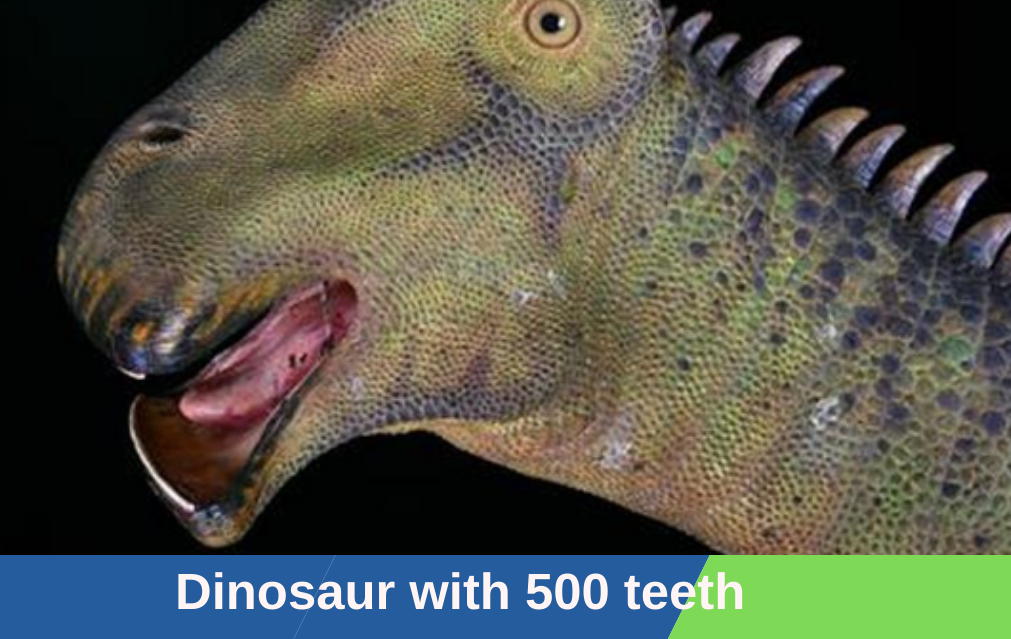“don’t google the internet with what dinosaur has 500 teeth” became popular after it was posted on Reddit. Google’s auto-suggestions can often spark a flurry of interest in a specific topic or issue among the general public. Even the Nigersaurus has a similar story to tell. One hundred fifteen million years ago in the Republic of Niger, a small country in West Africa, this predatory dinosaur was nothing like the meme!! Now that we know more about this unusual dinosaur, how did it look in its prime? And how did it come to be discovered, strictly? We’ll look at the fabled “dinosaur with 500 teeth” in this short article.
Discovery
Nigersaurus was initially mentioned in a 1976 research report by Phillippe Taquet. During a trip to the Republic of Niger from 1965-to 1972, this French paleontologist uncovered the remains for the first time. However, the discovery often went undiscovered since there was no complete skeleton.
In 1999, Paul Sereno, a Chicago University paleontologist, led an excursion to Niger’s Elrahz Formation, Gadoyfaoua. In 2007, Sereno and his coworker Jeffrey A. Wilson published a second paper in which they described the skull and feeding habits of Nigersaurus in greater detail. The National Geographic Society in Washington, D.C., received a plastic model of the dinosaur’s head from him.
On September 9, 2000, Sereno wrote in his online journal, “Nigersaurus, you probably remember, we named after bones acquired on the last expedition here three years ago…. With its long neck, this sauropod dinosaur possesses a unique cranium that has more than 500 teeth. This expedition’s primary purpose is to locate the rest of this remarkable dinosaur so that we may describe and recreate it for everyone to see.”
In addition, he went into great detail on how the team came across this one-of-a-kind dinosaur, complete with 500 teeth. According to Gabe’s description, the bones of a new plant-eating dinosaur lay partially exposed at her feet while strolling through reasonably flat terrain. She rubbed the sand from her chin and upper lip.
Other remains of this 500-toothed dinosaur have also been found in Brazil. As of yet, a complete fossil has not been found. Therefore it was impossible for the famous Nigersaurus to be skeletonized in its entirety. However, paleontologists are working hard to learn more about this extinct creature from the distant past.
Five hundred teeth: How many teeth were there?
Technically, it did. The Nigersaurus had a skull with 500 long, slender teeth. There were no permanent teeth in this set. Permanent and replacement teeth made up the majority of Nigersaurus’ 500 teeth.
What might a 500-toothed dinosaur look like?
However, Nigersaurus has several characteristics with the Sauropod dinosaurs. It used to have a smaller skull, with ticker hind legs and a tail like any other dinosaur. The femur was just one meter long, only nine meters tall. Paleontologists estimate that they weighed at least four tonnes. Thus, a Nigersaurus may have had the same height and weight as a modern elephant. Due to its body structure, it has a relatively short neck, with just thirteen cervical vertebrae.
The skull of the creature
Fenestra, the name given to Nigersaurus’ four skull holes, distinguishes it from other long-necked dinosaurs. Five hundred teeth could have been sheared off the skull, but it was sturdy enough to handle it. Also, its nostrils were long and bony.
The length of their snouts was reduced. Nigersaurus, on the other hand, had shorter snouts. Both their teeth and their snot were in proportion to the rest of their face. Its mouth was able to accommodate all 500 of its teeth because of this unique characteristic.
Carnivores benefit significantly from their teeth’s design. There was a 20-30% difference in size between the teeth on the lower and upper jaws. In addition, the teeth possessed uneven enamels and bent tooth crowns (thicker on the outside). They were able to remove plants from the ground level because of it.
Body
According to Paul Sereno, this dinosaur looked like a prehistoric crocodile. One foot of its back was covered in armor plates. The vertebral arches are deeply punctured, and the laminae between the pneumatic apertures are thick and fascinating. The tail’s vertebrae lacked any substantial centra. The thickness of its pelvic and pectoral problem bones was only a few millimeters. It had strong limbs like other sauropods or long-necked dinosaurs. As a distinctive characteristic of Diplodocus, the front limbs may have accounted for two-thirds of the hind limbs.
Dinosaur classification with 500 teeth
Nigersaurus was first included as a dicraeosaurus by Touquet. A new classification by Sereno, however, renamed the diplodocid the rebbachisaurid. A characteristic of Rebbachisaurid Diplodocoid, according to him, was its shorter necks.
Classification according to science is given below
Kingdom: Animalia
Chordata is a species in the class Animalia.
Dinosauria is a family.
the Saurischia clade
The Sauropodimorpha are the members of the following clade.
The Sauropods are a separate clade.
Diplodocoidea is the superfamily.
Rebbachisauridae is the name of the family.
The Rebecchi is a branch of the Rebecchi family. Suriname
Named after the Nigersaurus genus,
the Nigersaurus taqueti, a species
What kind of food did it consume?
Initially, Nigersaurus was supposed to be a plant-eating creature. However, it is widely believed to be a herbivore like any other sauropod dinosaur. It has a few pits and scratches on its teeth. Herbivores that eat ferns, weeds, and other low-level flora often exhibit this behavior. During this time, the grass did not change. This 500-toothed dinosaur was able to exist by eating horsetails, angiosperms, and other fern-like plants. Due to their rigid neck and height, they couldn’t eat cycads, aquatic vegetation, or conifers.
They’re comparable to today’s flamingos. Similar to these pink birds, it’s possible that Nigersaurus utilized its teeth to filter aquatic ferns and other vegetation from its diet. Aside from short conifers and other ground-level plants, nigersaurus may have eaten short conifers and other ground-level plants.
It couldn’t chew plants very well because of the lateral placement of its teeth. Their teeth quickly decayed as a result of this. As a result, they need this enormous number of teeth to replace the damaged ones with a functioning set. Compared to other herbivore dinosaurs, their teeth replacement rates are much higher!
Where did it come from, and how did it get there?
Fossils from Niger’s Elhaz Formation, part of the Tenma group, have been found there. You’ll find low-lying river sandstones and rare dunes with coarse-to-medium grain sizes in this area. However, during the mic-cretaceous period, this area was a floodplain. Food from ground-level vegetation was plentiful in the wetlands.
Conclusion
Nigersaurus, on the other hand, is a modest, innocuous dinosaur that lived about 115 million years ago, according to the fossil record. To gain a deeper understanding of this dinosaur, researchers must conduct further research.
Read Also Uwatchfree







One thought on “Who Among the Dinosaur Had 500 Teeth? “Nigersurus””